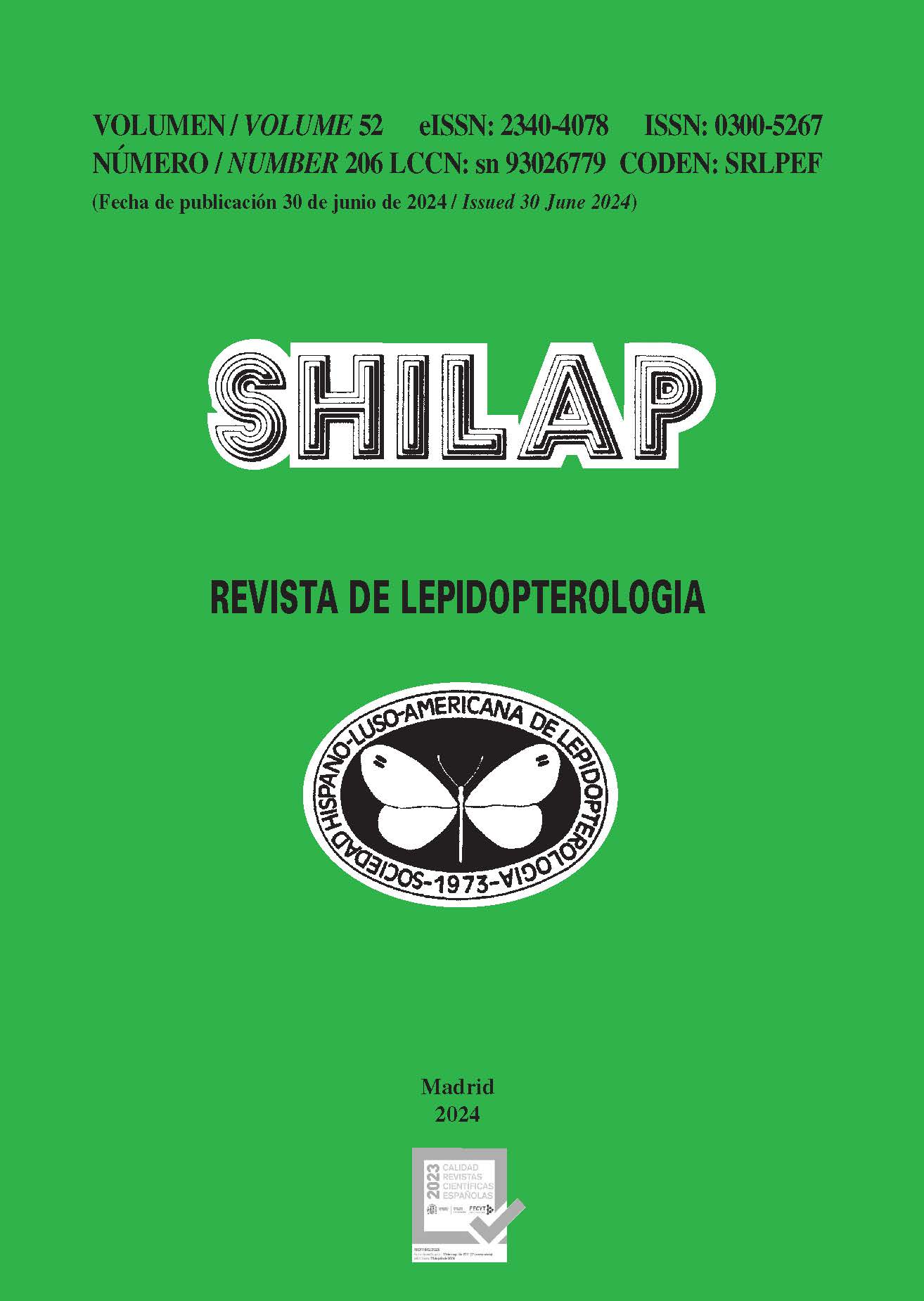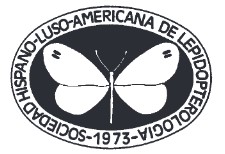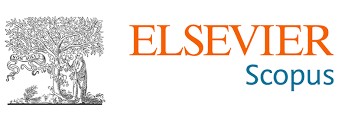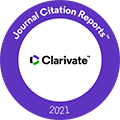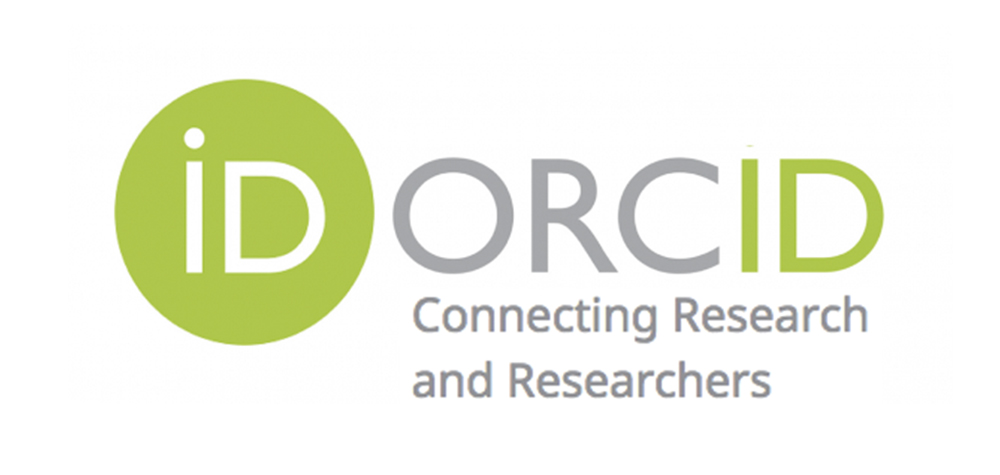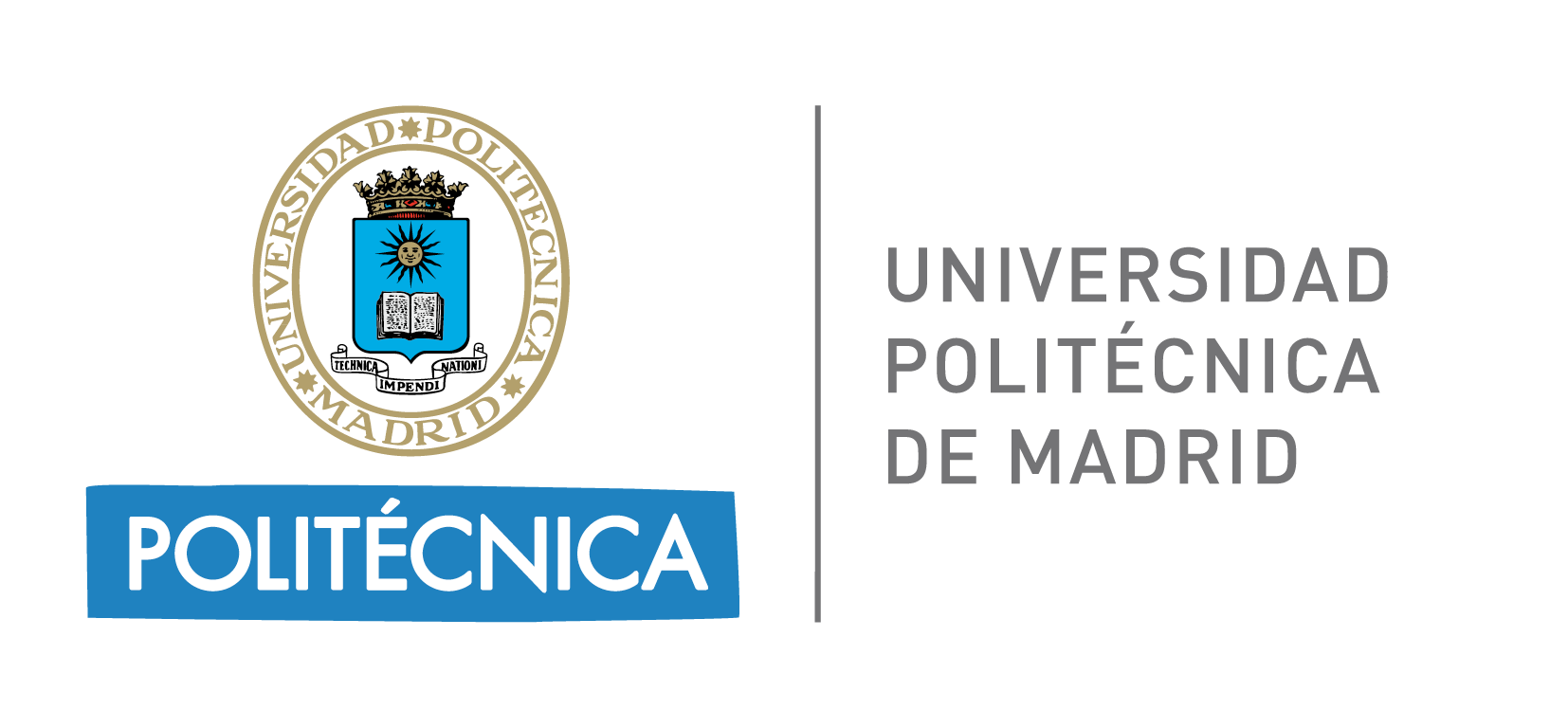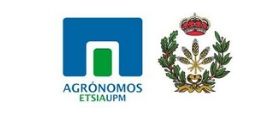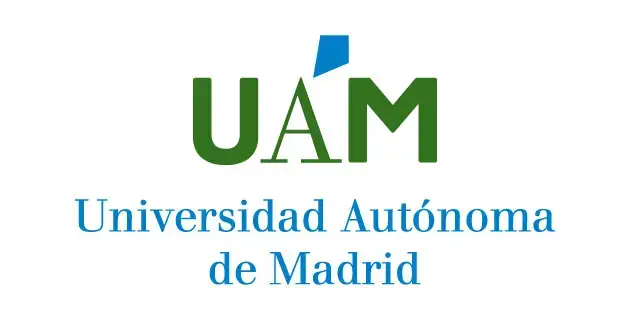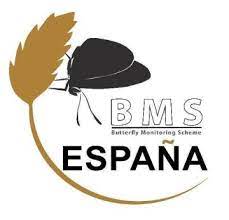Plusiinae of Kashmir: Taxonomy, distribution and new faunistic records (Lepidoptera: Noctuoidea)
DOI :
https://doi.org/10.57065/shilap.919Mots-clés :
Lepidoptera, Noctuoidea, Plusiinae, new records, Himalayas, Kashmir, IndiaRésumé
The present study encompasses twelve Plusiinae species, shedding light on their taxonomy, and geographical distribution. Among these, four species viz. Chrysodeixis acuta (Walker, [1858]), Cornutiplusia circumflexa (Linnaeus, 1767), Autographa nigrisigna (Walker, [1858]), and Sclerongenia jessica (Butler, 1878) are reported for the first time from the union territory of Jammu and Kashmir, India thereby adding novel insights to the local lepidopteran fauna. For future scientific endeavors, each of these newly reported species has been meticulously prepared and preserved with mounted specimens and genitalia, ensuring that researchers have access to valuable reference material for further studies.
Téléchargements
Statistiques globales ℹ️
|
464
Vues
|
221
Téléchargements
|
|
685
Total
|
|
Références
Dar, M. A. (2014). Diversity in family Noctuidae (Lepidoptera) from Kashmir region [PhD Thesis]. Punjabi University.
Kitching, I. (1987). Spectacles and silver Ys: a synthesis of the systematics, cladistics, and biology of the Plusiinae (Lepidoptera: Noctuidae). Bulletin of the British Museum (Natural History) Entomology, 54, 75-261.
Muddasar, S., Venkateshalu, B., & Patil, S. (2020). Taxonomy of plusiinae (Lepidoptera: Noctuidae) collected from vegetable ecosystem of Karnataka. Journal of Entomological Research, 44(3), 439-448. https://doi.org/10.5958/0974-4576.2020.00074.2 DOI: https://doi.org/10.5958/0974-4576.2020.00074.2
Riyaz, M., & Sivasankaran, K. (2022a). First record of Anadevidia peponis Fabricius, 1775 (Noctuidae: Plusiinae) from northwestern Himalayas-Kashmir, (J&K UT), India. Munis Entomology and Zoology, 17(2), 1515-1518.
Riyaz, M., & Sivasankaran, K. (2022b). First record of Xanthia (Cirrhia) icteritia (Hufnagel, 1766) (Noctuidae: Xyleninae) from India. Journal of Threatened Taxa, 14(8), 21745-21748. https://doi.org/10.11609/jott.7846.14.8.21745-21748 DOI: https://doi.org/10.11609/jott.7846.14.8.21745-21748
Ronkay, L. (1986). On the taxonomy and zoogeography of some Palaearctic and Indo-Australian Plusiinae (Lepidoptera, Noctuidae). Annales Historico-Naturales Musei Nationalis Hungarici, 78, 205-218.
Ronkay, L. (1987). Taxonomic and zoogeographical studies on the subfamily Plusiinae (Lepidoptera, Noctuidae). The Palaeotropical, Oriental and Nearctic material of the Zoological Museum, Copenhagen. Annales Historico-Naturales Musei Nationalis Hungarici, 79, 167-178.
Ronkay, L., Ronkay, G., & Behounek, G. (2008). A taxonomic atlas of the Eurasian and North African Noctuoidea. Plusiinae I. Witt Catalogue, 1, 1-348.
Ronkay, L., Ronkay, G., & Behounek, G. (2010). A taxonomic atlas of the Eurasian and North African Noctuoidea. Plusiinae II. Witt Catalogue, 1, 1-280.
Shashank, P. R., & Chattopadhyay, P. C. (2019). DNA barcoding of agriculturally important Plusiinae (Lepidoptera: Noctuidae). Biochemical and Cellular Archives, 19(2), 4181-4184.
Shashank, P. R., & Singh, L. (2014). Checklist of the subfamily Plusiinae (Lepidoptera: Noctuidae) from India. Indian Journal of Entomology, 76(3), 229-240.
Singh Kriti, J. S., Dar, M. A., & Khan, Z. H. (2014). Biological and taxonomic study of agriculturally important noctuid pests of Kashmir. World Journal of Agricultural Research, 2(2), 82-87. https://doi.org/10.12691/wjar-2-2-8 DOI: https://doi.org/10.12691/wjar-2-2-8
Sinha, T., Shashank, P. R., & Chattopadhyay, P. C. (2018). DNA barcoding and morphological characterization of moth Antoculeora ornatissima (Walker, 1858) (Lepidoptera: Noctuidae), a new range record from western Himalayan region of India. Journal of Threatened Taxa, 10(13), 1281-12820. https://doi.org/10.11609/jott.4127.10.13.12817-12820 DOI: https://doi.org/10.11609/jott.4127.10.13.12817-12820
Sivasankaran, K., Ignacimuthu, S., Gabriel Paulraj, M., & Prabakaran, S. (2012). A checklist of Noctuidae (Insecta: Lepidoptera: Noctuoidea) of India. Records of the Zoological Survey of India, 111(3), 79-101. https://doi.org/10.26515/rzsi/v111/i3/2011/158856 DOI: https://doi.org/10.26515/rzsi/v111/i3/2011/158856
Sondhi, Y., Sondhi, S., Shashank, P. R., & Kunte, K. (2018). Moth diversity (Lepidoptera: Heterocera) of Shendurney and Ponmudi in Agastyamalai Biosphere Reserve, Kerala, India, with notes on new records. Tropical Lepidoptera Research, 28(2), 66-89.
Sullivan, M., & Molet, T. (2014). CPHST pest datasheet for Autographa gamma. USDA- Animal and Plant Health Inspection Service- Plant Protection and Quarantine Division - Center for Plant Health Science and Technology.
Twinkle, P. R., Shashank, P. C., & Chattopadhyay, P. C. (2018). Taxonomy of agriculturally important Plusiinae (Lepidoptera: Noctuidae). Indian Journal of Entomology, 80(3), 748-60. https://doi.org/10.5958/0974-8172.2018.00188.8 DOI: https://doi.org/10.5958/0974-8172.2018.00188.8
Twinkle, S., & Shashank, P. R. (2018). A new record of Ctenoplusia kosemponensis (Strand, 1920) (Lepidoptera: Noctuidae: Plusiinae) from Karnataka, India. Advances in Biological Research, 9(5), 23-25.
Twinkle, T., Shashank, P. R., & Chattopadhyay, P. C. (2020). DNA barcoding and Taxonomic account on some selected species of subfamily Plusiinae (Lepidoptera: Noctuidae) from India. Zootaxa, 4845(4), 451-486. https://doi.org/10.11646/zootaxa.4845.4.1 DOI: https://doi.org/10.11646/zootaxa.4845.4.1
Zahiri, R., & Fibiger, M. (2008). The Plusiinae of Iran (Lepidoptera: Noctuidae). SHILAP Revista de lepidopterología, 36(143), 301-339.
Téléchargements
Publiée
Comment citer
Numéro
Rubrique
Licence
(c) Tous droits réservés Muzafar Riyaz, Savarimuthu Ignacimuthu 2024

Ce travail est disponible sous la licence Creative Commons Attribution 4.0 International .
L'auteur conserve ses droits de marque et de brevet sur tout procédé ou procédure figurant dans l'article.
L'auteur conserve le droit de partager, distribuer, exécuter et communiquer publiquement l'article publié dans SHILAP Revista de lepidopterología, avec une reconnaissance initiale de sa publication dans SHILAP Revista de lepidopterología.
L'auteur conserve le droit de procéder à une publication ultérieure de son travail, de l'utilisation de l'article à sa publication dans un livre, à condition d'indiquer sa publication initiale dans le SHILAP Revista de lepidopterología.
Chaque soumission à SHILAP Revista de lepidopterología doit être accompagnée d'une acceptation des droits d'auteur et de la mention de la paternité. En les acceptant, les auteurs conservent le droit d'auteur de leur travail et acceptent que l'article, s'il est accepté pour publication par le SHILAP Revista de lepidopterología, soit autorisé à être utilisé et distribué sous une licence "Creative Commons Attribution 4.0 International" (CC BY 4.0) ce qui permet une utilisation, une distribution et une reproduction sans restriction sur tout support, à condition que l'auteur et la source originale soient mentionnés.
Vous pouvez lire ici les informations de base et le texte légal de la licence. L'indication de la licence CC BY 4.0 doit être expressément mentionnée de cette manière lorsque cela est nécessaire.
À partir de 2022, le contenu de la version imprimée et numérique est soumis à une licence d'utilisation et de distribution "Creative Commons Attribution 4.0 International" (CC BY 4.0), ce qui permet une utilisation, une distribution et une reproduction sans restriction sur tout support, à condition que l'auteur et la source originale soient mentionnés.
Le contenu antérieur de la revue a été publié sous une licence de droit d'auteur traditionnelle; toutefois, les archives sont disponibles en libre accès.
Lors de l'utilisation du contenu de SHILAP Revista de lepidopterología publié avant l'année 2022, y compris les figures, les tableaux ou tout autre matériel sous forme imprimée ou électronique appartenant aux auteurs des articles, les auteurs doivent obtenir l'autorisation du détenteur des droits d'auteur. Les responsabilités légales, financières et pénales à cet égard incombent à l'auteur ou aux auteurs.
En application du Principe de Priorité du Code international de nomenclature zoologique, aucune autre version que celle publiée par l'éditeur ne peut être déposée dans des dépôts, des sites web personnels ou similaires.
